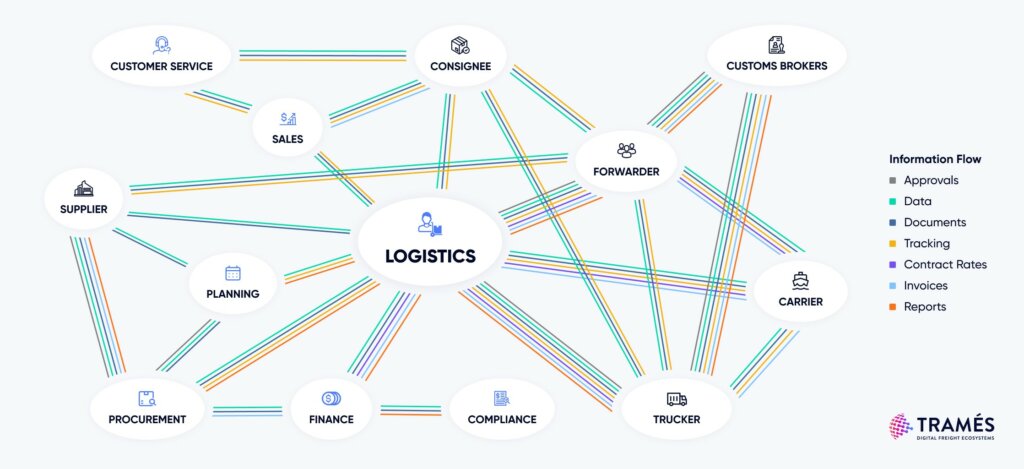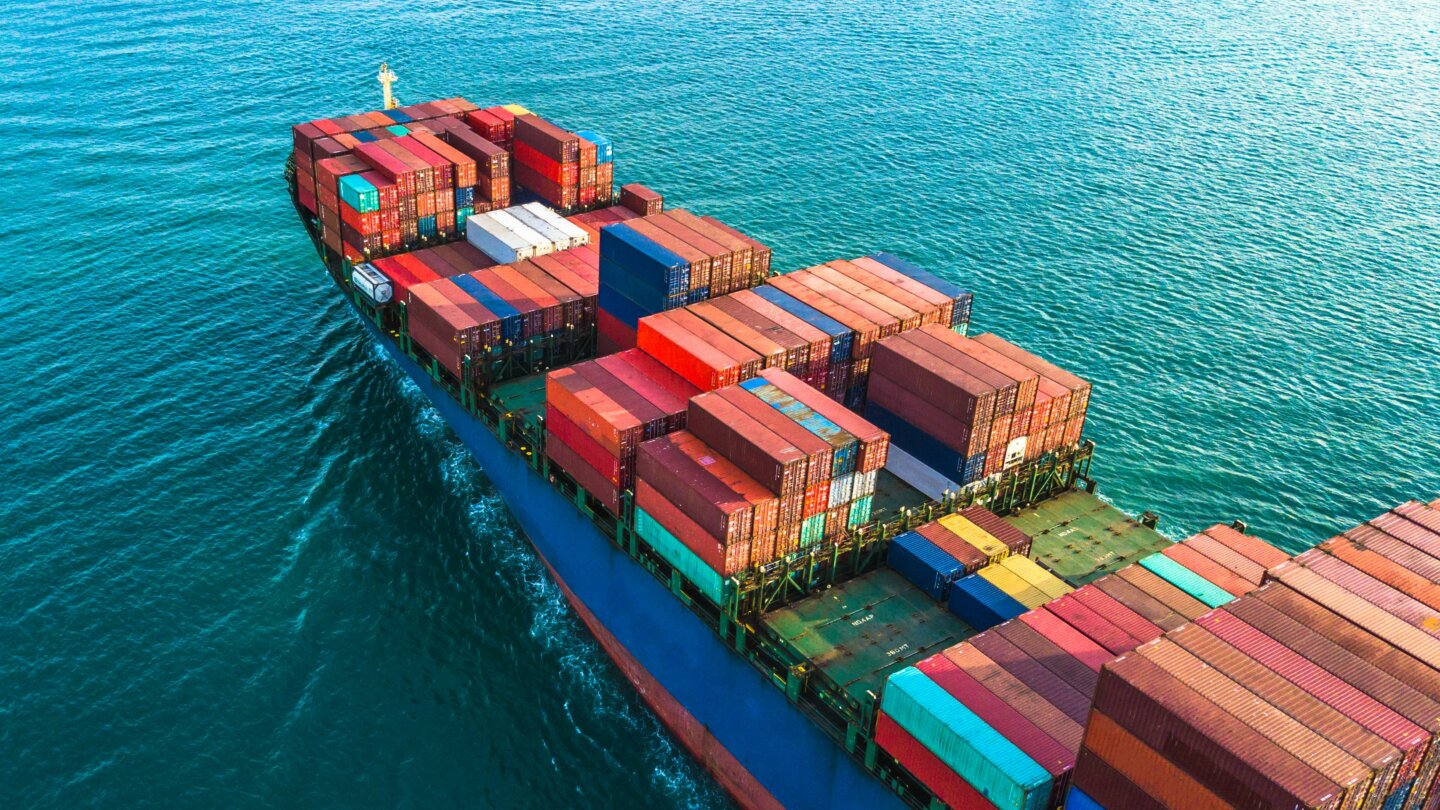Supply chains are undergoing rapid transformation driven by advancements in digital technologies. From transportation and warehouse management to supply chain visibility and customer engagement, digitisation is revolutionising how logistics operations are managed and executed. However, implementing digital solutions often requires significant change management efforts, which can be complex and time-consuming. What if there was a way to digitalise logistics operations with zero change management?
Tech Wire Asia recently interviewed Ivan Seow, Co-Founder and Chief Supply Chain Officer at Tramés Pte Ltd, to discuss how shippers can leverage digital technologies to streamline and optimise operations without disrupting their existing processes.
“We have learned from both successes and setbacks throughout our journey, that the challenges of digitalisation primarily lie in managing people,” said Seow. “70% of them want to digitalise with as little process change as possible.”
Adopting technologies that easily integrate with existing systems and complement legacy processes eliminates the need for change, and reduces the need for extensive training or operational restructuring, allowing businesses to adapt while maintaining business as usual. Prioritising user-friendly platforms also minimises any learning curve for employees, easing the transition and allowing them to focus on core tasks.
Seow added that the level of digital ambition drives the level of change management requirements, which in turn determines how technology will be implemented. The first step to successful digitalisation is by understanding the level of digital ambition of an organisation’s management versus the people involved. With the right technology, organisations aiming to minimise change management efforts can benefit from adopting a phased approach and prioritising incremental changes, while digitally ambitious organisations can take a full-fledged approach.
Why fix what is not broken?

A single shipment requires the collaboration of an entire ecosystem, making logistics operations and processes inherently complex. Source: Tramés
A thought-provoking question Seow often posts to supply chain leaders is, “While Excel spreadsheets and manual processes may have sufficed in the past, is it something that you or your employees want to continue relying on in the future?”
This inquiry prompts leaders to critically evaluate the suitability of outdated methods in today’s ever-evolving business landscape. Seow encourages them to embrace digital transformation and explore more efficient and innovative technologies for their supply chain operations, even if their current systems appear to function adequately.
Technology-driven automation, such as real-time visibility, workflow orchestration, automated freight audit, data aggregation, and dynamic analytics, can revolutionise how businesses operate by providing valuable insights for informed decision-making, optimising resource allocation, and minimising risks. Furthermore, digital solutions can significantly enhance productivity by automating repetitive tasks and reducing human errors.
When implemented at an ecosystem-wide scale, these solutions provide comprehensive end-to-end operational management and transportation visibility to all stakeholders, leading to invaluable benefits. With a holistic and transparent view of the entire business process, organisations can make informed decisions, optimise operations, and enhance efficiency throughout the supply chain. The wide-ranging advantages of ecosystem-level digital solutions can transform businesses, enabling them to stay competitive and thrive in today’s dynamic and data-driven business landscape.
Simplifying the lives of logisticians with technology
For Seow, real-time visibility is a crucial foundation that empowers supply chain partners to effectively manage delays and take recovery actions. The true benefits of real-time visibility are multi-layered and multi-pillared.
Firstly, automated real-time freight visibility enables organisations to respond promptly to delays and take better mitigation actions. Organisations can also increase productivity and reduce unnecessary supply chain cost with timely alerts about impending free time expirations to prevent detention or demurrage charges.
By scaling up to achieve end-to-end visibility – encompassing the entire supply chain journey from order placement to delivery – digitally ambitious organisations can unlock a plethora of benefits with increased data transparency to optimise their supply chain operations and reduce costs. This includes the ability to challenge carriers and freight forwarders about delays, performance, hidden supply chain costs and other critical factors. Additionally, accurate payment to service providers, facilitated through digital contracts and rates, allows for tighter controls over costs by measuring incoming invoice accuracy without an army of people behind the scenes.
Secondly, leveraging technology for data aggregation can bring about substantial enhancements in organisational operations. Automated and real-time analytics offer a comprehensive view of the business landscape, enabling in-depth analysis of key metrics such as freight booking lead time, operational performance, root cause analysis, and order fulfillment status. This not only saves time and effort in manual data analysis but also provides valuable insights for better strategic business decisions.
Lastly, digital collaboration and workflow orchestration tools play a pivotal role in fostering seamless communication and process governance among various stakeholders in the supply chain. This enhanced coordination and efficiency result in significant productivity gains within the freight ecosystems. By streamlining communication, automating workflows, and enabling real-time visibility, these tools empower organisations to optimise their operations, minimise delays, and maximise productivity. This ultimately leads to improved performance, reduced costs, and enhanced customer satisfaction, making digital collaboration and workflow orchestration indispensable components of modern supply chain management.
With Tramés, Seow hopes to provide logisticians in large corporations with the ability to work more easily and digitally, and change the way they work from their conventional means in the inherently complex transportation process which can be made simpler through technology.
Evaluating solutions: Prioritising agility, configurability, and scalability

Source: Shutterstock
When it comes to supply chain and logistics operations, agility, configurability, and scalability are critical factors to consider when evaluating technology solutions according to the level of digital ambition and change management.
Each organisation has unique logistics complexities and challenges, and a one-size-fits-all solution may not be suitable for everyone. Tramés believes that technology solutions should adapt to businesses, not the other way around, and they prioritise configurability to achieve just that. Organisations should be empowered to easily customise the solution and have full control over their data, workflows, processes, and rules, to align with their existing operations seamlessly.
Scalability is also a crucial consideration depending on the level of change management expected when implementing new technologies. Some organisations may prefer a gradual transition, while others may require larger-scale deployment. The scalability of technology allows organisations to implement the system at their desired pace and scale, whether it’s for a single department, a regional operation, or a global headquarter. This ensures that organisations can continue to effectively use the solution as the business grows, without facing limitations or constraints that may hinder their expansion plans.
Speed is key when it comes to deployment and is especially so when logisticians are constantly juggling multiple tasks and managing complex transportation operations. With agility, organisations can effectively manage the transition and ensure that all stakeholders can smoothly adapt to technology without unnecessary drag on their workload from the kick-off to go-live.
“Our primary emphasis is on upholding these fundamental principles to aid our clients in effectively navigating change management. By doing so, they can realise the benefits of the solution sooner and adapt and expand without unnecessary rigidity.”
According to Seow, the Tramés solution encompasses unparalleled data quality and comprehensive tools that surpasses larger brands in implementation cost and time. This includes taking about half the time other companies would require to deploy global projects, spanning from one to five months, depending on the extent of change management.
If you’re interested to more about how Tramés can improve your logistics operation, don’t hesitate to reach out to Ivan Seow at ivan@trames.sg.









